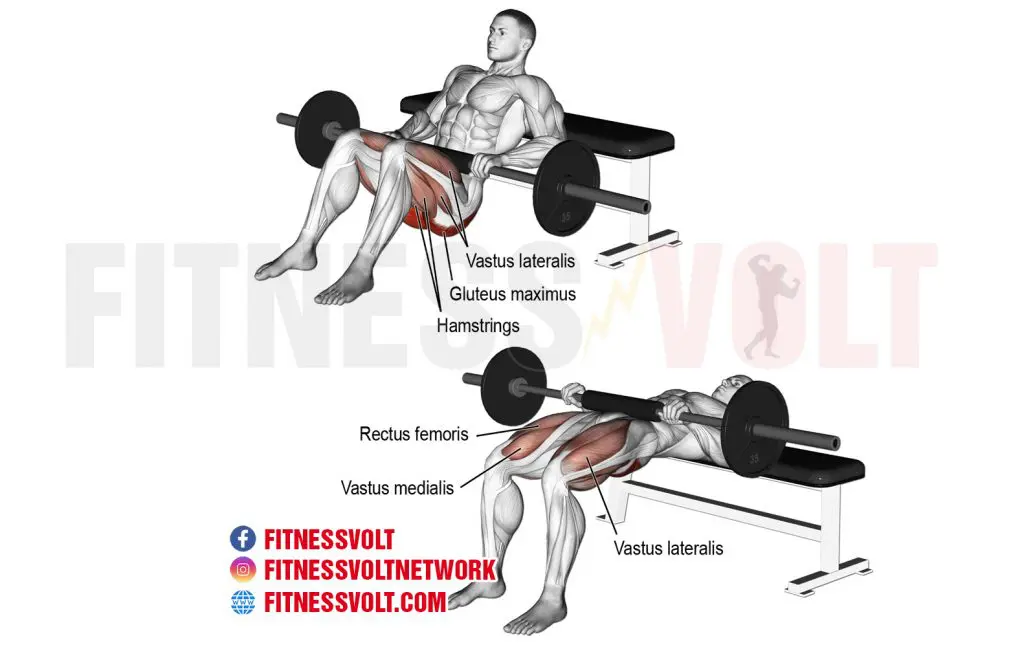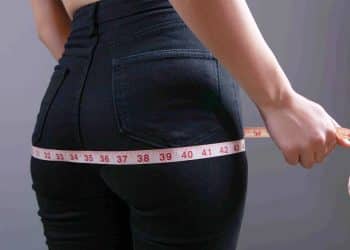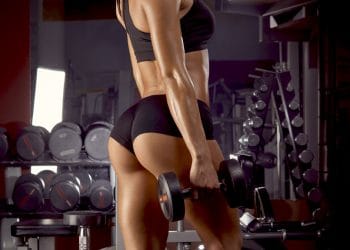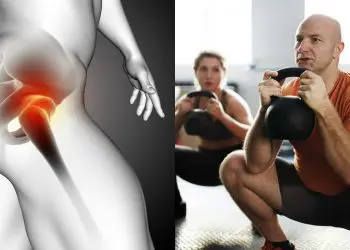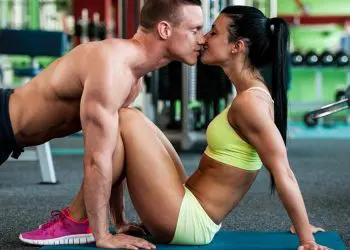When it comes to building muscle and strength, a lot of exercisers are very focused on glamor muscles like their pecs, biceps, and abs. While these muscles are important, there are other muscles you need to work on if you want to look and perform at your best.
Your hips and butt are very important, not only for how you look but for how you feel and perform too. The main muscles that make up this area of your body are:
- Gluteus maximus – this is your primary butt muscle. Also known as the glutes for short, gluteus maximus is the largest muscle in the body. Its primary job is to extend your hip, which means it drives your thigh backward. Its secondary role is lateral or external rotation, which means it turns your thigh outward. Gluteus maximus is also involved in hip abduction. This means it is responsible for lifting your leg away from the midline of your body. (1)
- Gluteus medius and minimus – these are your secondary, smaller glute muscles. Located beneath gluteus maximus and at the side of your hip joint, these muscles work together to abduct and rotate the hip. (2)(3)
- Adductor Longus, Brevis, and Magnus – these three muscles work together to adduct your femur. This means they pull your hip in toward the midline of your body. Each one is named after its size and shape. Adductor Longus is the longest of the three, Adductor Brevis is the shortest, and Adductor Magnus is the largest. (4)
Weak hip and butt muscles can have a significant impact on hip joint function. In fact, weak glutes can even cause knee and lower back pain too. Sitting for long periods will weaken your hips and glutes. This is called dormant butt syndrome (5).
The hip and glute muscles are involved in every lower body movement you make, from walking to climbing stairs, and from running to jumping. If these muscles are weak, your hips can become unstable.
Unstable hip joints mean that your thighs will roll inward or outward during physical activity, putting a strain on your joints and connective tissue. This increases your risk of hip, knee, and lower back pain. Strengthening these muscles will reduce your risk of injury.
Here are five of the best hip and butt exercises.
1- Hip thrusts
The hip thrust exercise mainly works gluteus maximus. It also involves your hamstrings and lower back muscles. Also known as glute bridges, this exercise is easy on your lower spine and can be done with or without weights.
Level Up Your Fitness: Join our 💪 strong community in Fitness Volt Newsletter. Get daily inspiration, expert-backed workouts, nutrition tips, the latest in strength sports, and the support you need to reach your goals. Subscribe for free!
How to do it:
- Sit on the floor with your legs bent and feet flat on the floor. Lean your upper back on an exercise bench. Weigh the bench down so it will not move.
- Drive your feet down into the floor and lift your hips up. At the top of the movement, your shoulders, hips, and knees should form a straight line. Squeeze your glutes as hard as you can at the top of each rep.
- Lower your butt back down to the floor and repeat.
Tips:
- To do this exercise with weights, place and hold a barbell or dumbbells across your hips.
- Put a resistance band around your knees and push your knees outward during this exercise to also work your hip abductors.
- Place a light medicine ball between your knees and squeeze it as you lift and lower your hips to work your hip adductor muscles.
2- Wide stance goblet squats
Goblet squats are an excellent exercise for your quads. But, if you step out into a wide stance and descend until your thighs are below parallel, it’s also a useful butt and outer hip exercise (6). This exercise will also increase lower body flexibility and mobility.
How to do it:
- Stand with your feet a little more than shoulder-width apart. Turn your toes slightly outward.
- Hold a dumbbell or kettlebell in front of your chest. Your elbows should be below the weight and tucked in close to your sides.
- Push your hips back, bend your knees, and squat down as low as you can without rounding your lower back. Consciously push your knees outward to activate your glutes and abductors fully.
- Stand back up and repeat.
Tips:
- Look forward and keep your chest up throughout.
- Use a resistance band around your knees to increase the load on your abductors.
3- Kettlebell swings
Kettlebell swings are a great circuit and interval training exercise. A set of high rep kettlebell swings will leave you out of breath and with your heart pumping hard and fast. This popular exercise is also a very good glute exercise (7).
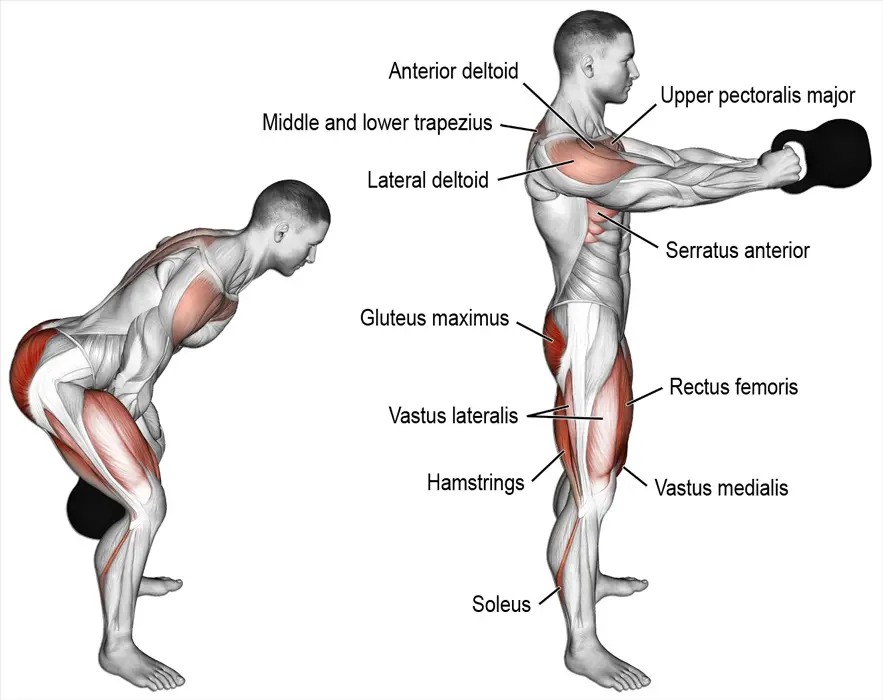
How to do it:
- Hold your kettlebell in two hands in front of your hips. Stand with your feet around shoulder-width apart, and your knees slightly bent.
- Push your hips back and lean forward from your hips. Do not round your lower back. Lower the weight between your knees.
- Drive your hips forward and use this momentum to swing the weight forward and up to shoulder-height. Do not bend your arms. Squeeze your glutes at the top of each rep.
- Lower the weight and repeat.
Tips:
- You can also perform this exercise using one arm at a time.
- Use a dumbbell if you don’t have a kettlebell.
- Heavier weights lead to greater glute activation.
4- Side-lying hip adductions
This simple bodyweight exercise targets and isolates your inner thighs – the adductor muscles. Because you don’t require any equipment for this exercise, it’s ideal for doing at home.
How to do it:
- Lie on your side with one hip directly above the other. Rest your head on your outstretched arm. Place your other hand on the floor in front of you for support.
- Bend your top leg and place your foot on the floor in front of you.
- Keeping your hips still, lift your lowermost leg as high as you can without moving your pelvis.
- Lower your leg back down to the floor and repeat.
Tips:
- Place a folded towel or a small cushion under your hips for comfort.
- Use ankle weights to make this exercise more demanding.
5- Single leg Romanian deadlifts
Single leg exercises increase hip muscle activation. When you stand or exercise on one leg, all of the muscles of the hip must work extra hard to stabilize your pelvis. This exercise works your glutes and hamstrings as well as your hip adductors and abductors. It’s also useful for improving your balance.
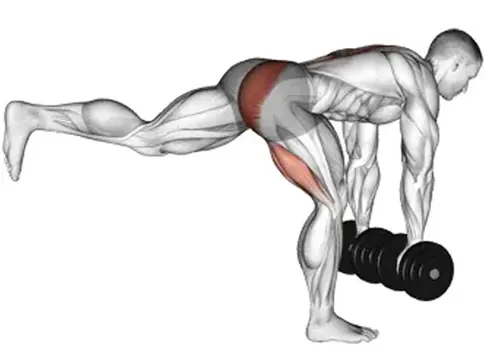
How to do it:
- Stand with your feet together, hands in front of your hips. Shift your weight over onto your left leg. Bend your supporting leg slightly for stability.
- Bend forward from your hips and reach down to touch the floor just in front of your feet. Extend your right leg out behind you for balance. Do not round your lower back.
- Stand back up and repeat. Do the same number of reps on both legs.
Tips:
- If necessary, do this exercise close to a wall and use your nearside hand to help you balance. As you get better at this move, try to rely less on the wall until you can do it without assistance.
- Make this exercise harder by holding a dumbbell or kettlebells.
Wrap up
Don’t neglect your hips or butt muscles. They are crucial muscles that deserve your attention! Make sure you include a couple of hip and butt exercises in all of your lower body workouts. If your hips and butt are particularly weak, try dedicating an extra workout per week to these crucial muscles.
References:
- Web MD – Gluteus maximus
- Physiopedia – Gluteus medius
- Physiopedia – Gluteus minimus
- TeachMeAnatomy – Muscles in the Medial Compartment of the Thigh
- Ohio State University, Wexner Medical Center – Dormant Butt Syndrome May Be to Blame for Knee, Hip and Back Pain
- Journal of Human Kinetics – Lower Extremity Strength and the Range of Motion in Relation to Squat Depth
- The International Journal of Sports Therapy – EMG Analysis and Sagittal Plane Kinematics of the Two‐Handed and Single‐Handed Kettlebell Swing: A Descriptive Study

